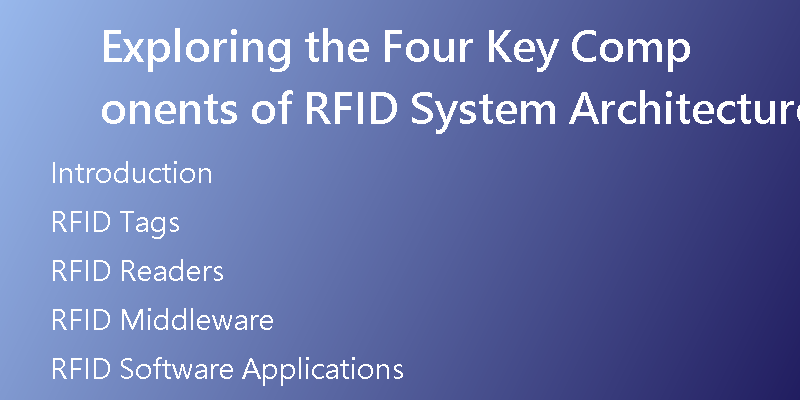Exploring the Four Key Components of RFID System Architecture
Introduction

RFID technology has revolutionized various industries by enhancing inventory management, asset tracking, and supply chain operations. Understanding the key components of RFID system architecture is vital for organizations looking to embrace this cutting-edge technology. In this article, we will explore the four crucial components that make up an RFID system.
RFID Tags
At the heart of every RFID system are the RFID tags. These small electronic devices consist of a microchip and an antenna. The microchip stores data and performs necessary computations, while the antenna enables communication with RFID readers. RFID tags come in various forms, including adhesive labels, cards, and even implants for specific applications. They can be passive, battery-assisted passive (BAP), or active, depending on the power source. These tags play a pivotal role in capturing and transmitting information throughout the RFID system.
RFID Readers
RFID readers, also known as interrogators, are responsible for capturing data from RFID tags. These devices utilize radio frequency signals to communicate with the tags and retrieve the stored information. RFID readers can be fixed or portable, depending on the application requirements. They are equipped with antennas that emit radio waves and receive signals back from the tags. By scanning the surrounding environment, RFID readers enable real-time tracking, monitoring, and inventory control. The collected data can then be transferred to a central database for further analysis and decision-making.
RFID Middleware
RFID middleware acts as a bridge between the RFID hardware components and the enterprise-level software systems. It provides a software interface that enables seamless integration and communication between various devices within the RFID system. RFID middleware enhances system efficiency by filtering and managing the vast amounts of data generated by RFID readers. It also offers additional functionalities such as data transformation, event management, and business rule enforcement. Moreover, RFID middleware facilitates data integration with existing enterprise resource planning (ERP) systems, enabling organizations to leverage their existing infrastructure and optimize business processes.
RFID Software Applications
The final component of the RFID system architecture is the software applications. These applications are designed to process, analyze, and utilize the data captured by RFID readers. They enable organizations to gain valuable insights into their operations, optimize inventory management, improve supply chain visibility, and enhance customer experiences. RFID software applications can include warehouse management systems, asset tracking solutions, and inventory control platforms. By leveraging real-time data, organizations can make informed decisions, reduce costs, and increase operational efficiency.
Conclusion
Exploring the four key components of RFID system architecture provides organizations with a comprehensive understanding of this transformative technology. RFID tags, readers, middleware, and software applications work together harmoniously to enable efficient data capture, analysis, and utilization. By embracing RFID technology, organizations can streamline their operations, improve inventory management, and gain a competitive edge in the market.


